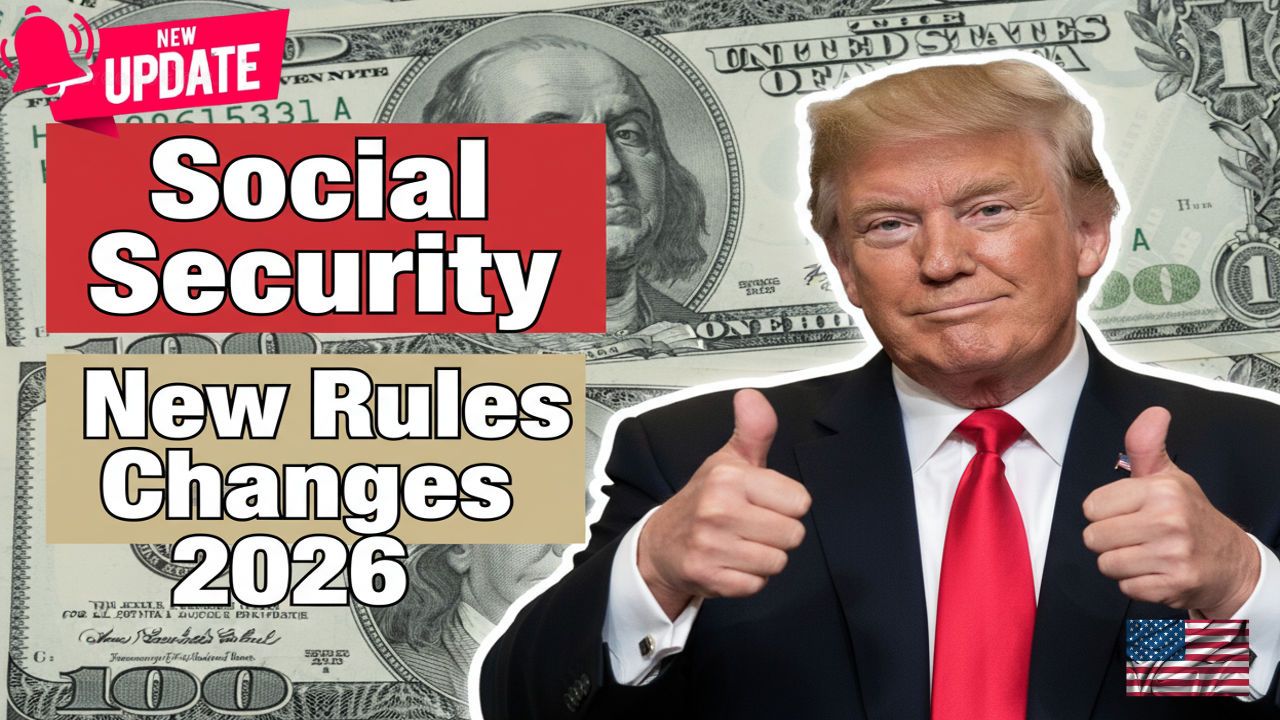Living costs keep climbing, and many retirees choose to keep working while drawing Social Security. The program’s rules are not static, and understanding how 2026 will work can help you avoid surprise withholding and make better decisions about when to claim, how much you can earn, and what happens when you reach full retirement age. Below is a clean, research-based rewrite that explains the expected 2026 earnings limits, how withholding is applied, when benefits are restored, and practical steps to stay compliant and maximize lifetime payments.
Social Security 2026 Quick summary table
Field |
Details |
|---|---|
Program |
Social Security Retirement benefits with 2026 earnings test rules |
Full Retirement Age (FRA) |
Typically 67 years for those born in 1960 or later |
Earnings test structure |
Unchanged in 2026, with higher dollar limits |
Expected 2026 earnings limit if under FRA all year |
24,360 dollars before withholding begins |
Expected 2026 limit in the year you reach FRA |
64,800 dollars, applies only up to the month you reach FRA |
Withholding formula under FRA |
1 dollar withheld for every 2 dollars above the annual limit |
Withholding formula in the year you reach FRA |
1 dollar withheld for every 3 dollars above that year’s higher limit, through the month before FRA |
Recalculation at FRA |
SSA adjusts your benefit to credit months that were fully or partially withheld |
Monthly payment timing |
Second, third, or fourth Wednesday, based on your birth date |
How you are paid |
Direct deposit or paper check, per your election |
Official site |
What stays the same and what changes in 2026
The framework stays the same. The earnings test still applies only before you reach full retirement age. After FRA, you can earn any amount and your retirement benefit will not be reduced.
Limits rise with wages and inflation. For 2026, the earnings thresholds are expected to increase modestly:
- If you are under FRA for all of 2026: the projected limit is 24,360 dollars.
- If you reach FRA during 2026: the projected limit is 64,800 dollars, and it applies only up to the month you attain FRA.
These higher thresholds let working beneficiaries keep more of their Social Security before any withholding kicks in.
How the earnings test and withholding actually work
The earnings test is often confused with a tax, but it functions differently.
- SSA projects your year’s work income. If you expect to exceed the limit, SSA often withholds future checks early in the year to cover the projected reduction.
- Under FRA all year: SSA withholds 1 dollar for every 2 dollars of earnings above 24,360 dollars.
- Reaching FRA during the year: SSA withholds 1 dollar for every 3 dollars of earnings above 64,800 dollars, through the month before FRA.
- If projections change: If you earn less than expected, withheld amounts are adjusted and any over-withholding is reconciled the following year.
Example
You are 64 in 2026 and expect to earn 30,000 dollars. That is 5,640 dollars above the 24,360 dollar limit. SSA will plan to withhold about 2,820 dollars of benefits during the year. If your actual earnings end up lower, SSA will reconcile the difference later.
Benefit restoration at full retirement age
Withholding is not permanent. When you reach FRA, SSA recalculates your monthly benefit to credit the months your check was fully or partially withheld. The result is a higher monthly payment for the rest of your life. In other words, the earnings test changes the timing of payments, not the total lifetime value in a simple sense, although claiming early still permanently reduces your base benefit compared with waiting until FRA.
Who is most affected in 2026
- Workers who claim before FRA and continue to earn income from wages or self-employment.
- Part-time workers, consultants, and small business owners who can control the timing of income may see the most planning benefit.
- Early claimers approaching FRA should pay attention to the higher 64,800 dollar limit that applies only in the year they reach FRA.
Payment timing and how benefits are delivered
- Monthly schedule: Payments arrive on the second, third, or fourth Wednesday of the month based on your birth date range.
- Delivery method: Direct deposit is standard, with paper checks still available if you have elected that option.
- Consistency: Even if SSA withholds some checks early in the year due to the earnings test, you will resume regular payments once the projected withholding requirement is satisfied.
Practical planning tips for 2026
- Estimate your annual earnings early. Use pay stubs and planned hours so SSA can withhold the correct amount up front, reducing year-end surprises.
- Monitor midyear changes. If you take fewer hours or more contract work than planned, update SSA so they can adjust withholding.
- Time income around FRA. Because the limit jumps in the year you reach FRA and ends in the month you hit FRA, timing can materially reduce or eliminate withholding.
- Coordinate with claiming age. If you do not need income immediately, delaying claiming even a few months can reduce or avoid the earnings test altogether.
- Track self-employment carefully. Net earnings after expenses count toward the test. Budget for both self-employment taxes and potential SSA withholding.
- Review Medicare implications separately. Earnings can affect IRMAA surcharges for Medicare Part B and D. That is separate from the Social Security earnings test.
Common misconceptions clarified
- It is not a penalty or a tax. The earnings test shifts payments from now to later, then your benefit is adjusted at FRA.
- It does not apply after FRA. Once you hit full retirement age, there is no earnings limit.
- All wages and net self-employment count. Investment income and pensions do not count for the earnings test.
- You can change withholding. If your earnings outlook changes midyear, tell SSA to avoid over-withholding.
Birth year and full retirement age reference
- 1959: 66 and 10 months
- 1960 or later: 67 years
If you were born in 1960, you will be 66 in 2026 and reach FRA at 67 in 2027. If you were born in 1959, you reach FRA in 2026 depending on your birth month.
Frequently asked questions
1) Once I reach FRA, can I earn without restrictions?
Yes. After full retirement age, your Social Security benefit is not reduced no matter how much you earn.
2) What are the expected earnings limits for 2026?
If you are under FRA for the entire year, the projected limit is 24,360 dollars. If you reach FRA during 2026, the projected limit is 64,800 dollars through the month before you hit FRA.
3) Is the earnings test a penalty or a tax?
No. It is a timing mechanism. Withheld amounts are effectively credited back when SSA recalculates your benefit at FRA.
4) Which income counts toward the earnings test?
Wages and net earnings from self-employment. Investment returns, pensions, annuities, IRAs, and 401(k) withdrawals do not count toward the test.
5) What if SSA withholds too much?
If your actual earnings end up lower than projected, SSA reconciles the difference. Over-withholding is adjusted in future payments or refunded.
6) Can I avoid withholding by delaying my start date?
Yes. If you expect to exceed the limit, delaying your claim until you are closer to FRA or until after a high-earning project can reduce or avoid withholding and can also increase your base benefit.
7) How are my monthly payment dates determined?
Payments typically arrive on the second, third, or fourth Wednesday based on your birth date. Your award letter shows your assigned week.
8) Where can I manage my benefits online?
Use your my Social Security account at https://www.ssa.gov/ to review earnings, estimate benefits, and manage payment preferences.
For More Information Click Here








